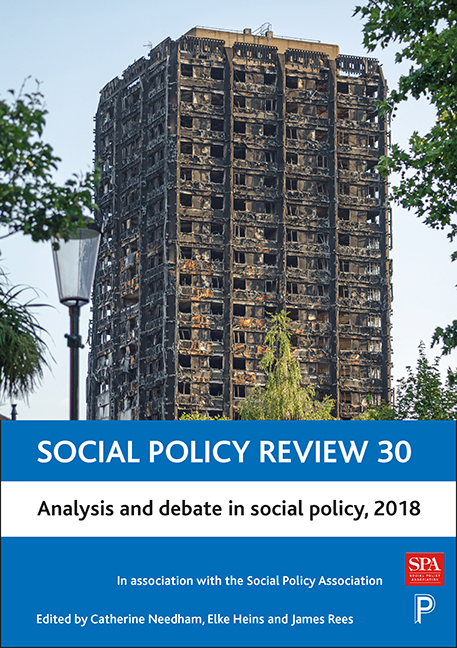One - Grenfell foretold: a very neoliberal tragedy
Published online by Cambridge University Press: 22 April 2022
Summary
Introduction
At around 12.50am on 14 June 2017, a fire broke out on the fourth floor of Grenfell Tower, a 24-storey public housing tower block in North Kensington, London. Ten minutes later, firefighters were handling an apparently routine job – Grenfell had been designed to contain fires from spreading. However, within 15 minutes flames had reached the top floor, and shortly after the whole building was ablaze. It would take 250 firefighters, 70 fire engines and 60 hours to extinguish the fire that killed at least 72 people and made 208 households homeless. The fire's rapid spread was immediately linked to cladding fitted during a recent refurbishment scheme about which Grenfell Tower residents had made repeated fire safety warnings to various public agencies to no avail (ASH, 2017). Attention focused on the main contractor, Rydon, the chain of private companies that fitted the cladding, the Conservative-controlled local authority – the Royal Borough of Kensington and Chelsea (RBKC), which owned Grenfell Tower – and the arm’s-length company, Kensington and Chelsea Tenant Management Organisation (KCTMO), that managed the homes. Nine days after Grenfell, 800 homes in five public housing tower blocks on the Chalcots Estate in Camden, London, also refurbished by Rydon between 2006 and 2011, were evacuated, and soon hundreds more tower blocks across England were deemed a fire risk as cladding samples failed government-ordered tests.
In the aftermath of Grenfell, a more fundamental political question was soon posed: how, less than a decade after the deadly Lakanal House fire in Southwark that had prompted calls by the investigating authorities for fundamental changes to building regulations, could this have been possible? With the Conservative government floundering after a disastrous snap general election, an emboldened Labour Party began shifting the focus onto the political and structural causes of the tragedy. Labour's Shadow Chancellor, John McDonnell, claimed the victims had been ‘murdered by political decisions that were taken over recent decades’ including housing privatisation, deregulation and recent cuts to local authority and fire service budgets under the Conservatives’ austerity programme (quoted in BBC News, 2017a).
- Type
- Chapter
- Information
- Social Policy Review 30Analysis and Debate in Social Policy, 2018, pp. 5 - 26Publisher: Bristol University PressPrint publication year: 2018



